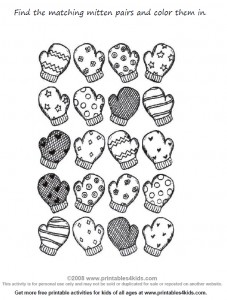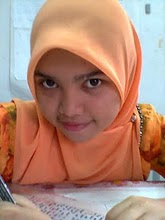Hi,
Welcome to my blog for EAB023. Here I will reflect upon Maths Explorations for Young Learners.
In relation to your first explorations into Mathematics, did it perplex you like a jungle where the ideas were all jumbled? Other people, such as myself, compare their early explorations into maths to learning a new recipe. To find the answer, you simple follow the step by step process using the calculations outlined in the instructions.
In relation to my early mathimatical explorations, I found that I didn't need to understand the deeper meaning of how math actually works. Instead, I put emphasis on practising the step by step process and listening to the teacher's instructions to achieve a result.
According to Bredeltamp and Copple (1997), young children until the age of 8 lack the logical representation of Mathematics. In the other words, young children have problems using abstract and logical thought to solve problems.
In relation to your first explorations into Mathematics, did it perplex you like a jungle where the ideas were all jumbled? Other people, such as myself, compare their early explorations into maths to learning a new recipe. To find the answer, you simple follow the step by step process using the calculations outlined in the instructions.
In relation to my early mathimatical explorations, I found that I didn't need to understand the deeper meaning of how math actually works. Instead, I put emphasis on practising the step by step process and listening to the teacher's instructions to achieve a result.
According to Bredeltamp and Copple (1997), young children until the age of 8 lack the logical representation of Mathematics. In the other words, young children have problems using abstract and logical thought to solve problems.
As mentioned in Perry, Bob and Dockett, Sue (2002), early childhood is the preparation stage for future Mathematical development and comprehension. In the first workshop, I learnt interesting strategies and methods of approaching and developing students' logical thought. Most notably, Irons (1999)explore some interesting mathematical processes which are extended upon in the following examples.
Beginning Process in Mathematics
1) Identifying and describing attributes
-Students identify and describe attributes based on the likeness or
differences between objects.
-Foster range of languages and reasoning skills.
-Example:
The teacher gives object of the same shapes with different colours and ask
the students to identify the likeness and differences in their own language.
the students to identify the likeness and differences in their own language.

2) Matching
- Focus on the sameness of the attribute
- Students select objects or pictures that have some similar attributes and
describe why they match.
- Students' reasoning and language skill expand as students might ask
question like 'Why do those match?'
- Eg: matching object to outlines, matching pictures to pictures
3) Sorting
- Sorting involves matching but in a greater number of objects.
- It involves grouping objects or pictures according to one or more attributes.
4) Comparing
- In comparing, students' vocabulary is greatly develop.
(the used of superlative -er; tall-er, bigg-er)
- Comparing two objects and attributes (can be more than two objects/
attributes).
5) Ordering
- The process involves arranging objects, pictures, etc according to the
relation between them based on the increasing or decreasing attributes.
relation between them based on the increasing or decreasing attributes.
- Basically the students practice identifying and comparing in the ordering
process.
6) Patterning
- A repetition of objects or pictures that are recognisable and predictable.
- Involves the processes of identifying, describing and repeating.
- Patterning develops children mathematical reasoning as it helps children to
organise and memorise mathematical ideas and relationships.
- Patterning also provides foundation for problem solving skills such as
observing, analysing and predicting.
In the first tutorial class, my group created some pattering using different colours and shapes as the repeated attributes. In the first pattern, we started with a simple pattern, arranging the trucks pattern according to colours; blue-red-yellow. From there, the students will observe and identify the recognisable repeated attribute which is the colours.
At the second stage, we created another pattern involving the previous beginning process which are comparing and ordering. We arranged the sea shells pattern according to the sizes from small,bigger to biggest. In this stage, students' develop their mathematical logical representation as they need to recap the previous stages in the beginning process as well as understand the rule in patterning in order to 'translate' this new pattern. On top of that, students' language is also expanded as the will use the superlative words such as 'this is bigger than this one' and 'this is the biggest'.
- Involves the processes of identifying, describing and repeating.
- Patterning develops children mathematical reasoning as it helps children to
organise and memorise mathematical ideas and relationships.
- Patterning also provides foundation for problem solving skills such as
observing, analysing and predicting.
In the first tutorial class, my group created some pattering using different colours and shapes as the repeated attributes. In the first pattern, we started with a simple pattern, arranging the trucks pattern according to colours; blue-red-yellow. From there, the students will observe and identify the recognisable repeated attribute which is the colours.
At the second stage, we created another pattern involving the previous beginning process which are comparing and ordering. We arranged the sea shells pattern according to the sizes from small,bigger to biggest. In this stage, students' develop their mathematical logical representation as they need to recap the previous stages in the beginning process as well as understand the rule in patterning in order to 'translate' this new pattern. On top of that, students' language is also expanded as the will use the superlative words such as 'this is bigger than this one' and 'this is the biggest'.
trucks and sea shells patterns in the math tutorial class
Thus, by approaching our young children using the beginning process, children will be more prepared in terms of abstract and logical taught readiness. Learning also be more fun and meaningful.




0 comments:
Post a Comment